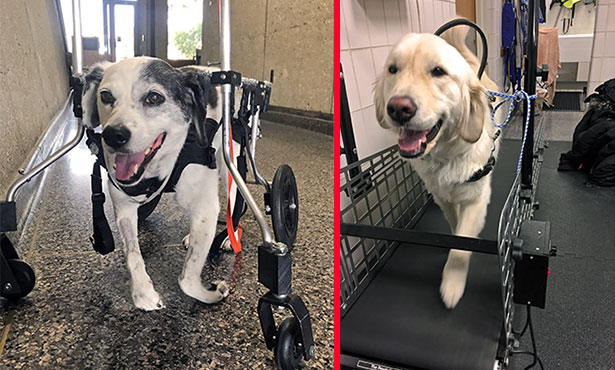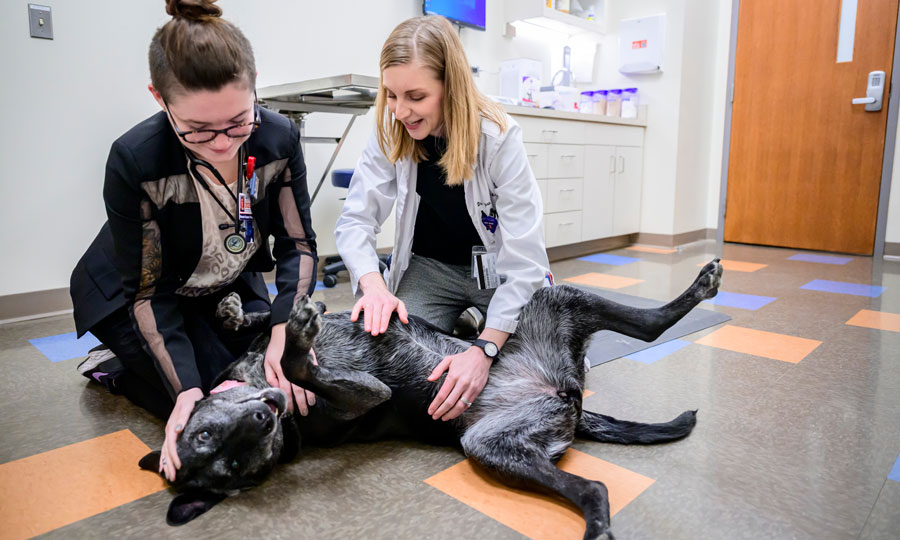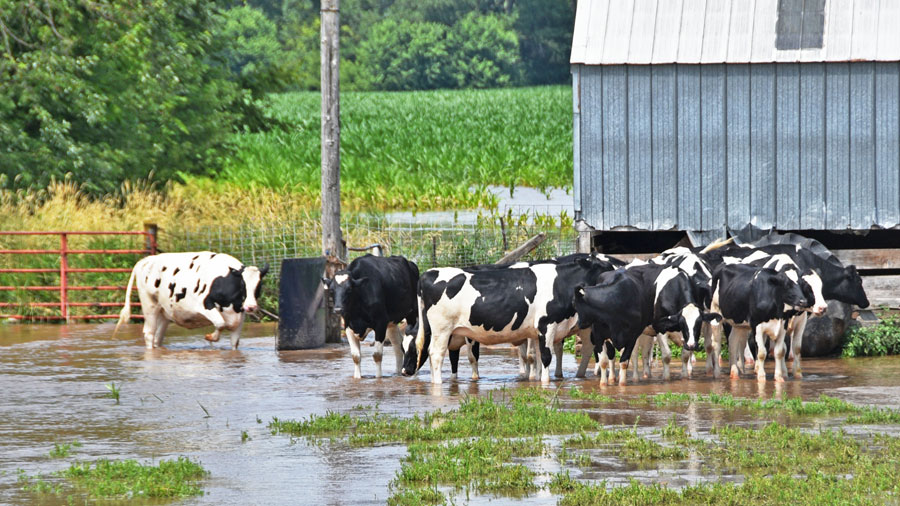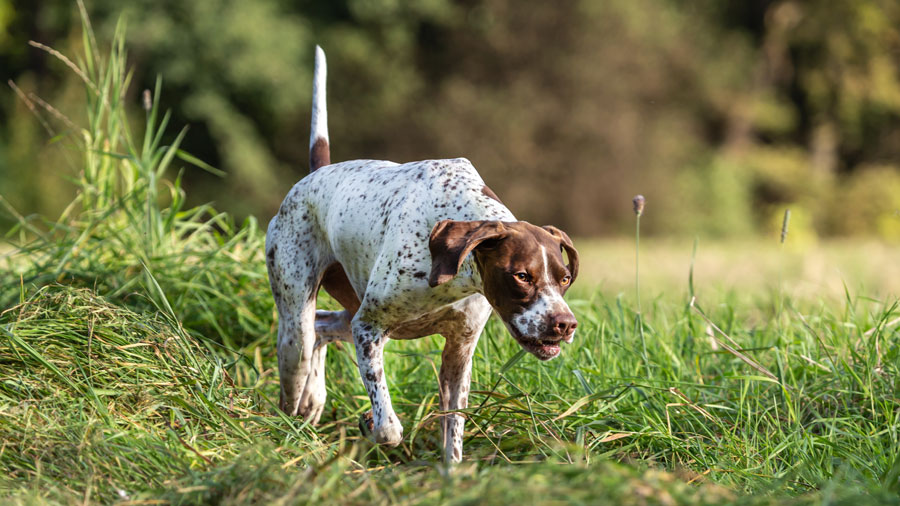Plans’ Success Depends on Implementation at Home
Physical rehabilitation for animals is the process of evaluating and managing patients with painful or functionally limiting conditions caused by illness or injury. Carrie Chandler-Harrison is a certified veterinary technician and certified canine rehabilitation practitioner at the University of Illinois Veterinary Teaching Hospital in Urbana. When an animal loses some function of its body, she is there to create a rehabilitation plan to improve the animal’s quality of life.
“We’ve done rehabilitation with many species—dogs, cats, alpacas, pigs, and even wildlife,” says Chandler-Harrison. “Each treatment plan, although individualized, focuses on the animal regaining strength, function, and stamina.”
Rehabilitation involves exercises to strengthen and improve function to the specific area where the animal experiences deficits, most often the muscles or neurologic system. “The most common cases we see are osteoarthritis, spinal issues, and cruciate problems,” says Chandler-Harrison. (The cruciate ligament, in dogs as in humans, is located in the hind limb joint, or knee.)
![[Louie gets a back massage]](https://vetmed.illinois.edu/wp-content/uploads/2021/04/pc-rehab2.jpg)
A pig that had a hindlimb amputated came to the rehabilitation technicians. “After his surgery, he really struggled with mobility issues, so he received massage, stretching, balancing exercises, and walks to improve his function.” Without rehabilitation therapy, he would not have been able to get around very well.
Other approaches used in rehabilitation include exercising on land and underwater treadmills, therapeutic ultrasound, laser therapy, and therapeutic exercises such as pole weaving and crawling through a tunnel. In the image at the top of the page, Sampson, at right, a golden retriever who is also a service dog, exercises on the land treadmill while recovering from elbow surgery; Willow was paralyzed and uses a wheelchair for dogs while recovering from neck surgery.
“Therapeutic ultrasound, for example, can be really beneficial to intensely stretch out a muscle to decrease scar tissue created by an injury,” says Chandler-Harrison. This therapy was vital to help an alpaca regain function of his back leg due to a severe contraction in the gastrocnemius muscle (similar to the calf muscle in a human).
When a patient comes in for rehabilitation, the technicians begin with the diagnosis provided by a veterinarian and use that to determine the best treatment plan for the animal. “We give the animal a full physical, neurologic and orthopedic examination to determine the patient’s comfort level and establish a baseline assessment before the rehabilitation begins,” says Chandler-Harrison.
During a rehabilitation appointment, the animal will work with the technicians to complete the treatment plan with the equipment at the clinic, such as the treadmills and obstacle courses. However, some of the exercises will be done at home with the owner. The technicians will make sure the owner is comfortable with carrying out the treatments at home.
“It is so important that the owner follows through with completing the exercises and our recommendations. It is the best way for the pet to make progress through the treatment plan,” Chandler-Harrison says.
If you think your pet could benefit from individualized animal rehabilitation, contact your local veterinarian or the Small Animal Clinic at the University of Illinois.
By Beth Pieper




